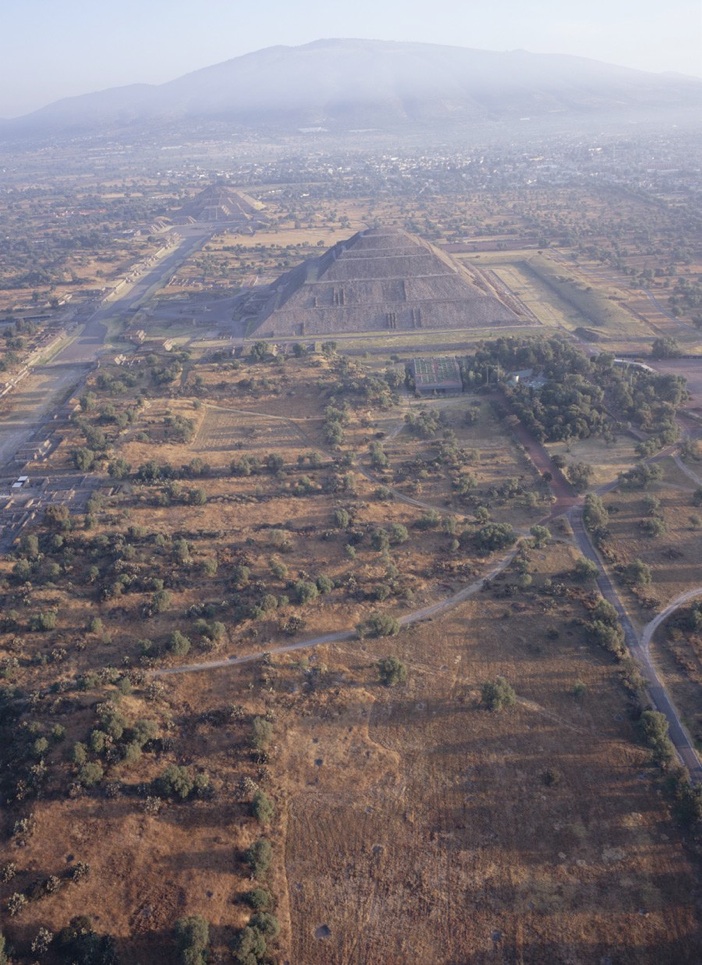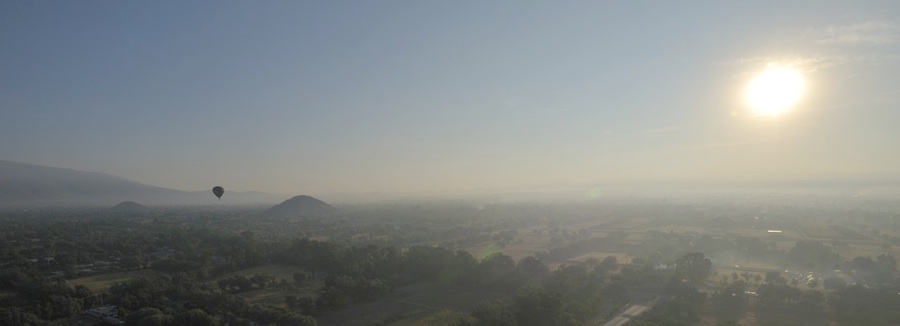The day after visiting Cacaxtla and Xochitecatl, Enrique and I visited Teotihuacan. Teotihuacan has a similar layout to the pyramids and temples on the Giza Plateau in Egypt. I feel that the current Teotihuacan ruins were built on top of an older city built by the Atlanteans. Teotihuacan also has many square platforms and smaller pyramids, which give the site (especially the Avenue of the Dead) a very dense uncomfortable energy similar to the Toltec sites like Tula. I felt mixed emotions about this site due to the original Atlantean energy (which felt good) and the more recent Teotihuacano energy of human sacrifice (which felt yucky). I would definitely like to visit Teotihuacan again sometime.
According to the LONELY PLANET Guide to Mexico, 9th Edition, published September 2004, ISBN 1-74059-686-2, Pages 184-185, Teotihuacan was Mexico’s biggest ancient city and the capital of Mexico’s (probably) largest Pre-Hispanic Empire. The inhabitants developed the city’s grid plan in the early part of the 1st Century A.D. They then built the Pyramid of the Sun over an earlier cave shrine by 150 A.D. They built the rest of the city between about 250-600 A.D. 2 great avenues divided the city into quarters that met near the Citadel. The north-south avenue is the Avenue of the Dead. The inhabitants covered the pyramid-like buildings in lime and painted them colorfully. Residential compounds made up most of the city, some of which contained frescoes/murals.



